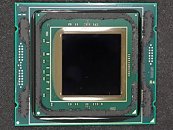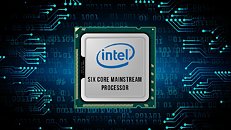Friday, September 22nd 2017

Intel Core i7 8700K Reportedly Reaches 4.8 GHz Easily, 5 GHz+ Requires Delid
A report out of Expreview says that users should expect Intel's 8700K 6-core processor to easily clock up to 4.8 GHz with conventional cooling methods. Apparently, the chip doesn't even need that much voltage to achieve this feat either; however, thermal constraints are quickly hit when pushing Intel's latest (upcoming) leader for the mainstream desktop parts. Expreview says that due to the much increased temperatures, users who want to eke out the most performance from their CPU purchase will likely have to try and resort to delidding of their 8700K. While that likely wouldn't have been necessary with Intel's 7700K processors, remember that here we have two extra CPU cores drawing power and producing waste heat, so it makes sense that thermals will be a bigger problem.
This is understandable: Intel is still using their much chagrined (and divisive) TIM as a heat conductor between the CPU die and the CPU's IHS (Integrated Heat Spreader), which has been proven to be a less than adequate way of conducting said heat. However, we all knew this would be the case; remember that Intel's HEDT HCC processors also feature this TIM, and in that case, we're talking of up to 18-core processors that can cost up to $1,999 - if Intel couldn't be bothered to spend the extra cents for actual solder as an interface material there, they certainly wouldn't do so here. As with almost all peeks at as of yet unreleased products, take this report (particularly when it comes to frequencies, as each CPU overclocks differently) with a grain of salt, please.
Source:
Expreview
This is understandable: Intel is still using their much chagrined (and divisive) TIM as a heat conductor between the CPU die and the CPU's IHS (Integrated Heat Spreader), which has been proven to be a less than adequate way of conducting said heat. However, we all knew this would be the case; remember that Intel's HEDT HCC processors also feature this TIM, and in that case, we're talking of up to 18-core processors that can cost up to $1,999 - if Intel couldn't be bothered to spend the extra cents for actual solder as an interface material there, they certainly wouldn't do so here. As with almost all peeks at as of yet unreleased products, take this report (particularly when it comes to frequencies, as each CPU overclocks differently) with a grain of salt, please.


119 Comments on Intel Core i7 8700K Reportedly Reaches 4.8 GHz Easily, 5 GHz+ Requires Delid
"Non-eutectic alloys have markedly different solidus and liquidus temperatures, and within that range they exist as a paste of solid particles in a melt of the lower-melting phase. In electrical work, if the joint is disturbed in the pasty state before it has solidified totally, a poor electrical connection may result; use of eutectic solder reduces this problem."
The solder would have fractured along the grain boundaries of it's different components.
Frankly the use of poor low temperature solder seems much more likely to cause such high failure rates.
Interestingly enough Nvidia had similar problems too around the same time. It turned out it was indeed because of poor high-lead solder with a very low melting point where the joints would in fact deform , eventually breaking contact and cause the card to fail.
The flame is just built up angst that intel :